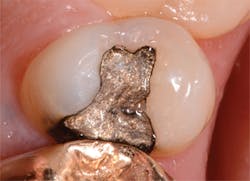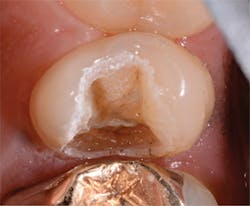'The New Normal': Class II amalgam removal with a dental laser
Michael Kelly, DMD, explains how investing in a dental laser helped him to overhaul his clinical workflow and increase his efficiency. As an example, he details a case in which he used the laser for a Class II amalgam removal.
The evolution of technology within dentistry is a topic widely discussed and rightfully so-innovative tools coming to the market are evolving the practice of dentistry in ways that once seemed unattainable. Technology has enabled dentists to do more procedures with greater efficiency that previously would have been referred out, all while creating a better patient experience. The evolution of technology in dentistry has resulted in dentists being able to develop and grow their practices.
Dental lasers have been a key to unlocking practice- growth strategies. Within my practice, I use Convergent Dental's Solea, a CO2, 9.3-μm laser system cleared by the FDA for hard-, soft- and osseous-tissue ablation. I've found it to be fast, precise, and most importantly, reliably anesthesia- and blood-free for the majority of my procedures.
Since investing in a CO2 laser, I have completely overhauled my clinical workflow. I have been able to increase efficiency within my practice by eliminating almost all of the anesthesia injections and associated waiting, completing multiquadrant dentistry, performing same-day fillings, and reducing postoperative appointments for bite adjustments. In regard to soft-tissue procedures, the lack of blood, stitches, and postoperative discomfort enables me (and other dentists) to perform procedures that previously would have been referred out. These changes also significantly increase the number of referrals because patients love the experience.
Figure 1: No. 4 with an old, fractured amalgam
Pre-op
Restoration removed
Post-op
While these factors alone have resulted in a "wow" response from both me and my patients, it's also important to understand the clinical benefits of using a CO2, 9.3-μm laser.
Recently, I used the Solea laser for a Class II amalgam removal (figure 1). No anesthetic was used for this case. The enamel setting (1.25-mm spot size, a pulse duration of 45 microseconds, and 100% mist) was selected. The cutting speed was started at 10% for approximately 10-15 seconds and was increased to 100% over the course of approximately 60-75 seconds. While working within the enamel setting, I traced the periphery of the old restoration. To remove the amalgam, I used a 330 bur with a high-speed electric drill and 100% mist (the patient reported no sensation other than vibration). Using the dentin setting (a pulse duration of 70 microseconds and 100% mist), the cutting speed varied between 10% and 100%. I removed the staining and decay and smoothed the margins. Following a selective-etch procedure, I then restored the tooth with Ivoclar Tetric EvoCeram Bulk Fill composite.
RELATED | 3 ways a dental laser can increase your revenues
RELATED | 4 reasons you need a dental laser in your practice
Without Solea, this process would have taken significantly more time and would have required local anesthesia. My patient's experience would not likely not have been as pain free.
As patients continue to expect more from appointments in comfort, efficiency, and results, incorporating lasers into the dental practice becomes an outstanding opportunity to meet-and exceed-those expectations.
Michael Kelly, DMD, practices at Aesthetic Dentistry of Scottsdale in Arizona. He has earned mastership with the Academy of General Dentistry and International Congress of Oral Implantologists. He is an accreditation candidate with the American Academy of Cosmetic Dentistry and serves as senior clinical instructor for Aesthetic Vision Seminars. He is dedicated to sharing tips, techniques, and technology that will enhance dentistry. Contact him at [email protected].



